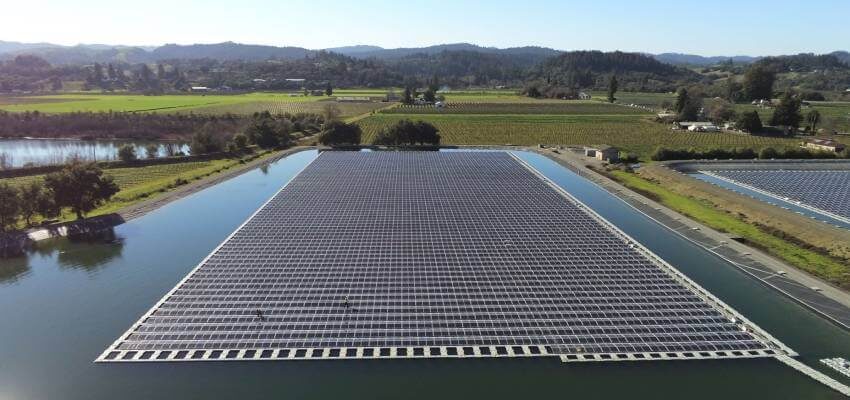Floating solar nearing price parity with land-based solar
The gap between the cost of land-based solar and floating solar has narrowed, and they are close to reaching price parity.

Image source: Ciel & Terre
USA, Washington DC: The gap between the cost of land-based solar and floating solar has narrowed, and – over the life of a project – floating solar and land-based solar are close to reaching price parity.
The price to install floating solar is about 10 % to 15 % higher, Stetson Tchividjian, director of business development at D3Energy, a floating solar developer, but floating solar has lower operation and management (O&M) costs because there are no vegetation concerns. Also, the panels stay cleaner because there are minimal dust or silt issues. The lower cost of solar materials and more efficient anchoring and construction practices have also helped push down the cost of this technology.
Currently, the National Renewable Energy Lab (NREL) and the U.S. Department of Energy (DoE) are conducting a study to quantify the impacts and benefits of these floating systems, and one of the main points that they are examining is the cooling effect produced by the fact that floating solar panels are mounted over water. Similar studies conducted in Asia have shown that the increased efficiency ranged anywhere from 10 % to 20 %, Tchividjian said.
There are different ways the utilities are exploring to implement floating solar. One is the ability of utilizing floating solar on their power plants’ cooling ponds, while another is a distributed generation model using stormwater ponds. Floating solar arrays can also be deployed as an alternative to land-based solar farms in areas were land is in short supply or in dry places where it can be installed at man-made reservoirs to help mitigate evaporation.
The next phase includes large utility projects in the U.S. within the next two years. In Asia, where the floating solar market is more developed, a utility-scale market already exists. To date, the largest array that D3Energy has built is 1 MW; the largest floating photovoltaic in the U.S. – a 4.4 MW array in New Jersey – utilizes the floating system of D3Energy’s partner, Ciel & Terre.
Four years ago, there were just two floating solar arrays in the U.S., and by the end of this year, there will be over 20. D3Energy has over 25 projects in its 2021 pipeline and several other projects are already in their contract phase.
Cargill’s floating solar push was born out of its bio-industrial business group. For Cargill, floating solar presents an opportunity to get involved when companies are developing new generation projects.
Floating solar projects that use Cargill’s FR3 fluid as the insulating liquid in transformers and other electrical equipment have been built in Asia, Brazil and India. FR3 is 98% bio-based, readily biodegradable, non-toxic in water and soil and carbon neutral.
“The best advantage for solar generation transformers is the exceptional capacity of FR3 fluid of increasing the thermal class of the insulation system. This allows for increasing the peak capacity of more compact transformers, leading to economic savings,” said Alan Sbravati, global technical application manager at Cargill BioIndustrial and a dielectric solutions specialist.
Source: PV Magazine




